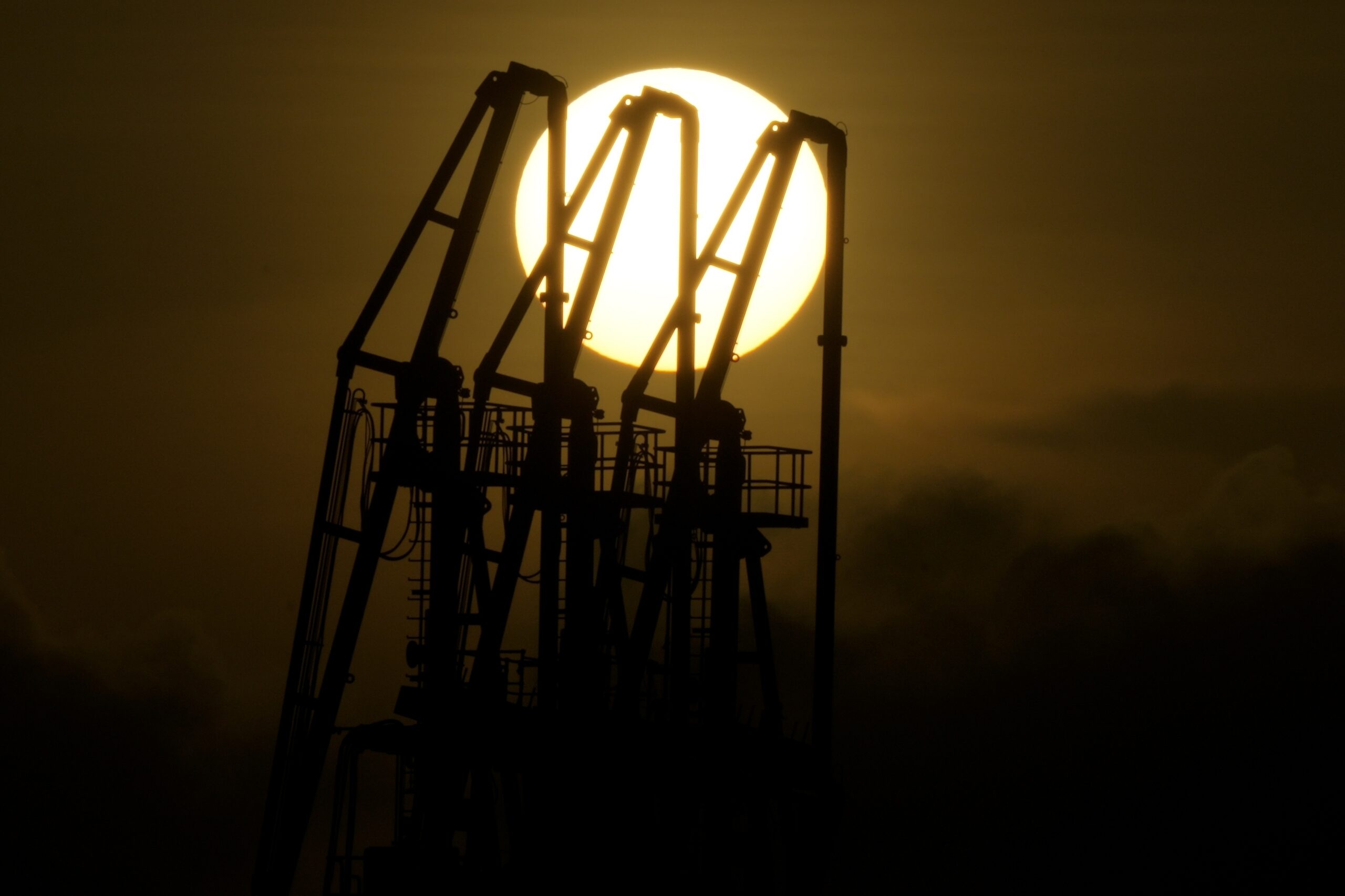The sun sets near a liquified natural gas (LNG) power plant at the coastal village of Santa Clara in Batangas province, Philippines on Tuesday, Aug. 8, 2023. The Philippines is seeing one of the world’s biggest buildouts of natural gas infrastructure.
(AP Photo/Aaron Favila) MANILA, Philippines — Sea turtles still scramble from the waters of Batangas Bay, paddling up the sand to bury their eggs. Coral reefs that some marine biologists call the Amazon of the ocean lie just offshore, home to giant clams, nurturing small fish, which in turn are prey for manta rays. But above the surface, the land is changed.

The fishing village of Santa Clara is now surrounded by four power-generating stations, all burning natural gas. The construction isn’t over. Four more power plants that burn natural gas are planned for the coastline.
What was a string of fishing villages is now an industrial zone. The Philippines is going all in for electricity made via climate-damaging combustion, with almost two dozen power stations planned and the ambition to become a gas hub for the entire Asia Pacific region. READ: PH at crossroads between LNG dependence and clean energy When natural gas is super-chilled into a liquid, special tanker ships can transport millions of cubic feet of it at a time, and the global trade in liquified natural gas or LNG is growing fast.
It’s one of the world’s largest natural gas power buildouts and will contribute to climate change at a time when alternative, renewab.
















